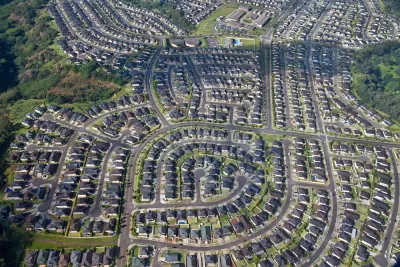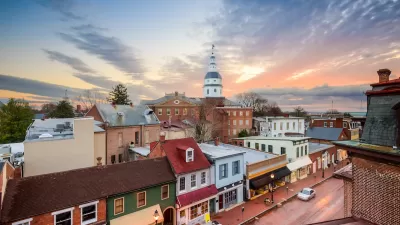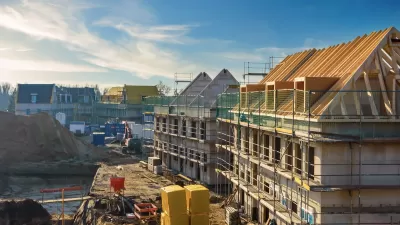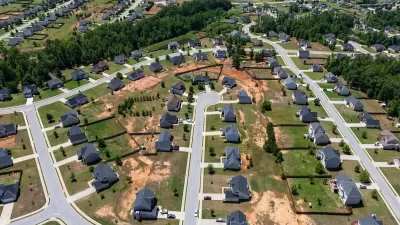One common defense of pro-sprawl government policies is that government reflects the will of the people. But is this really true?

When I try to explain why suburban sprawl is not the result of the free market, arguments often start like this:
Other person: You can complain all you want about sprawl, but it's what people want.
Me: Sprawl isn’t the result of the free market, it’s the result of government policy. Your tax dollars paid for the highways that opened up suburbia to development, zoning codes and minimum parking requirements made suburbia car-dependent, and the failure of school desegregation ensured that cities had stigmatized schools and suburbs had prestigious ones. (I explain these policies in more detail here).
Other person: But we live in a democracy! If the government did it, it's what the people want!
What’s wrong with the other person’s conclusion? The most obvious flaw is that what government does is not always what the people want. This is so for three reasons. First, the government doesn’t always know what (if anything) the people want. On some issues, public opinion polling is so common that what most Americans want is fairly obvious: for example, there are many polls on abortion, and it seems pretty clear that most Americans think abortion should be legal some of the time but not all of the time.
But issues like transportation and land use are not heavily polled, so politicians don’t necessarily know much about public opinion. For example, pollingreport.com, a website that compiles the results of national polls, includes over a dozen 2022 polls on abortion. By contrast, the website’s most recent national poll focusing on transportation was in 2018. Thus, even a politician who really wants to know what the average citizen thinks might have some difficulty figuring this out.
Instead of relying on the opinions of the public as a whole, politicians understandably listen to the people who lobby them and give them money. So, if the loudest voices they hear want highways, the politicians fund highways. Government gives money to road-builders to build highways, and they use that money to lobby politicians and make campaign contributions. That lobbying causes politicians to support even more highway spending, ad infinitum. By contrast, public transit agencies can’t give campaign contributions, which limits their appeal to politicians.
Similarly, in the land use context, zoning laws might reflect the views of a few dozen people who speak at public hearings rather than the views of the average person. If there are no loudmouths to shift the dialogue, zoning laws might reflect the views of unelected planners, or the views of one or two council members who have stronger opinions on zoning than the rest of the council.
Second, even if politicians knew what the average citizen thought, they might not give much weight to that hypothetical citizen’s views because the average citizen might just vote on party lines or based on other issues. National polls suggest that issues such as transportation and zoning are rarely “voting issues.” For example, Gallup regularly asks Americans what the most important problem facing the country is; typically only 3 or 4 percent pick environmental issues, and infrastructure is even less important.
Third, sprawl doesn’t reflect today’s electorate as much as it reflects the electorate of the 1920s (when zoning was created), the 1950s and 1960s (when a highway-building boom caused cities to lose population to suburbs), and the 1970s (when zoning began becoming much more restrictive in coastal states). In those days, public polling was far less frequent than it is today, so even if today’s state legislator can guess what the average person thinks about public transit or housing policy, that might not have been true when the United States was set on its current car-dependent path.
Fourth, not all policies affecting urban development were even created by elected legislators. For example, minimum parking requirements are often created by planners who look at what other cities are doing, and school desegregation policies (which made urban schools in affluent neighborhoods unattractive to whites by requiring those schools to diversity while suburban schools were allowed to stay all-white) was rammed down Americans’ throats by the Supreme Court.
But let’s assume for the sake of argument that every anti-urban 20th-century policy would have been endorsed by the average citizen. (In fairness, I do think some, if not all, of these policies were probably popular). Does that mean that these policies reflect popular will more than the free market would?
Not necessarily. If public policy reflects the will of the majority, the minority gets shut out. By contrast, the free market creates unanimity without conformity; the majority gets what it wants, but the minority gets what it wants.
For example, suppose that 60 percent of people in a town want a big house, and 40 percent want a small house or an apartment. The 60 percent could use zoning laws to impose their preferences, ensuring that the entire town is zoned for big houses. The 40 percent would either have to move or pay for more house than they want. By contrast, in a city without land use regulation, 100 percent of people get what they want: the big house people get big houses, the small house people get small houses. (I realize that empirical reality is somewhere in between these extremes; nevertheless, the collapse of apartment construction over the past several decades suggests that the first scenario matches reality more than the second). Thus, even the most democratic government only reflects the preferences of a majority.

Planetizen Federal Action Tracker
A weekly monitor of how Trump’s orders and actions are impacting planners and planning in America.

Map: Where Senate Republicans Want to Sell Your Public Lands
For public land advocates, the Senate Republicans’ proposal to sell millions of acres of public land in the West is “the biggest fight of their careers.”

Restaurant Patios Were a Pandemic Win — Why Were They so Hard to Keep?
Social distancing requirements and changes in travel patterns prompted cities to pilot new uses for street and sidewalk space. Then it got complicated.

Platform Pilsner: Vancouver Transit Agency Releases... a Beer?
TransLink will receive a portion of every sale of the four-pack.

Toronto Weighs Cheaper Transit, Parking Hikes for Major Events
Special event rates would take effect during large festivals, sports games and concerts to ‘discourage driving, manage congestion and free up space for transit.”

Berlin to Consider Car-Free Zone Larger Than Manhattan
The area bound by the 22-mile Ringbahn would still allow 12 uses of a private automobile per year per person, and several other exemptions.
Urban Design for Planners 1: Software Tools
This six-course series explores essential urban design concepts using open source software and equips planners with the tools they need to participate fully in the urban design process.
Planning for Universal Design
Learn the tools for implementing Universal Design in planning regulations.
Heyer Gruel & Associates PA
JM Goldson LLC
Custer County Colorado
City of Camden Redevelopment Agency
City of Astoria
Transportation Research & Education Center (TREC) at Portland State University
Camden Redevelopment Agency
City of Claremont
Municipality of Princeton (NJ)






























